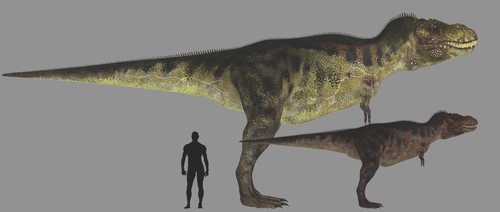Scientists find scary old things in the Arctic ground
By Matthew Mallon
UpHere.ca June 1, 2014
 Nanuqsaurus, the North’s new “pygmy” dinosaur, was announced to much hoopla this spring, when fragments from a 2006 excavation in Alaska were identified in a recent report as a separate, smaller Tyrannosaurus species. But not much smaller. Despite the fact that Nanuqsaurus was a) half the size of his regal relatives, and b) likely covered in a coat of downy feathers, the 70-million-year-old reptile was still six metres from head to toe, able to comfortably snack on even the largest modern polar bear.
Nanuqsaurus, the North’s new “pygmy” dinosaur, was announced to much hoopla this spring, when fragments from a 2006 excavation in Alaska were identified in a recent report as a separate, smaller Tyrannosaurus species. But not much smaller. Despite the fact that Nanuqsaurus was a) half the size of his regal relatives, and b) likely covered in a coat of downy feathers, the 70-million-year-old reptile was still six metres from head to toe, able to comfortably snack on even the largest modern polar bear.
But a more menacing—and much tinier—discovery comes from across the Bering Strait, where scientists have recently revived a virus long preserved in Siberian permafrost. It was harmless. But their results prove there are unknown viruses buried in the permafrost, and some might not be quite so benign. “Mining and drilling means bringing human settlements and digging through these ancient layers for the first time since millions of years [ago],” the researchers wrote in their report. “This is a good recipe for disaster.”
